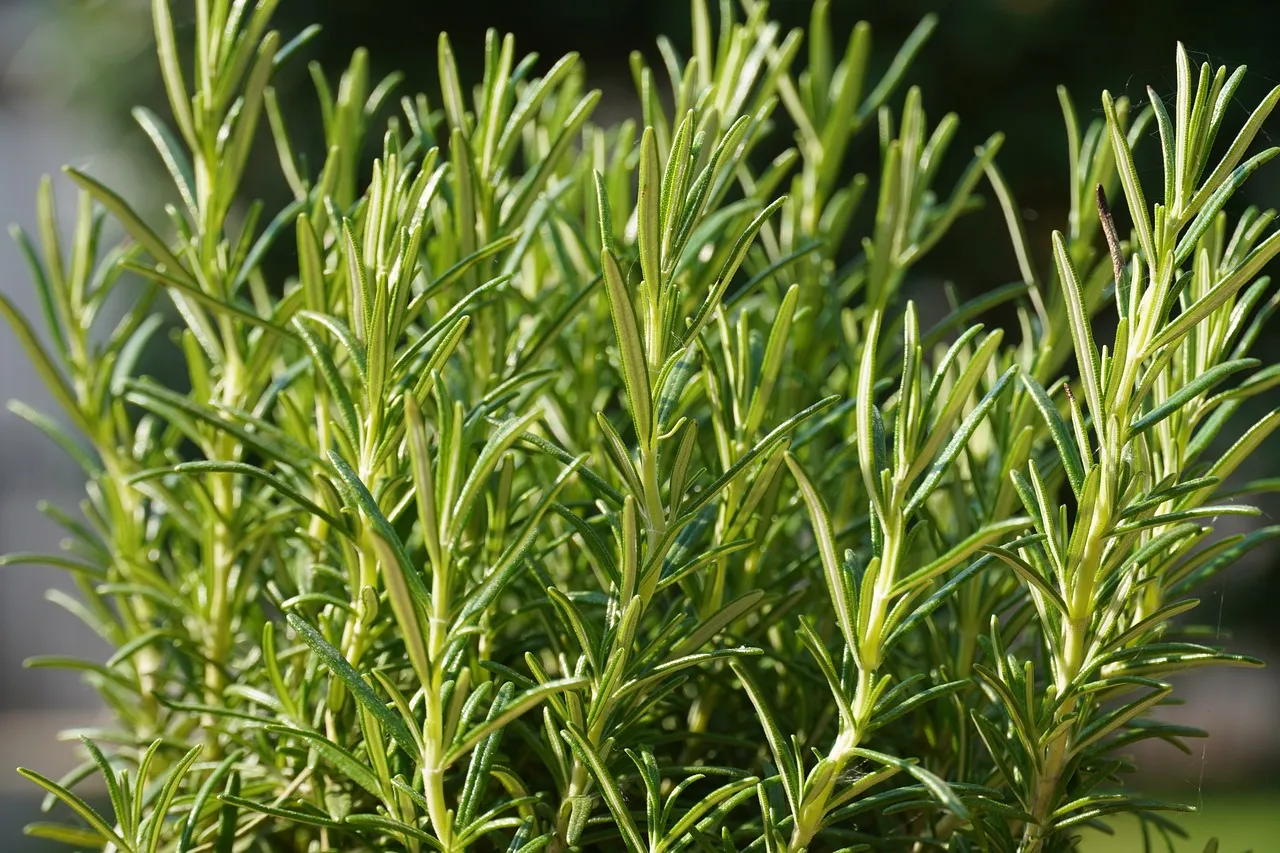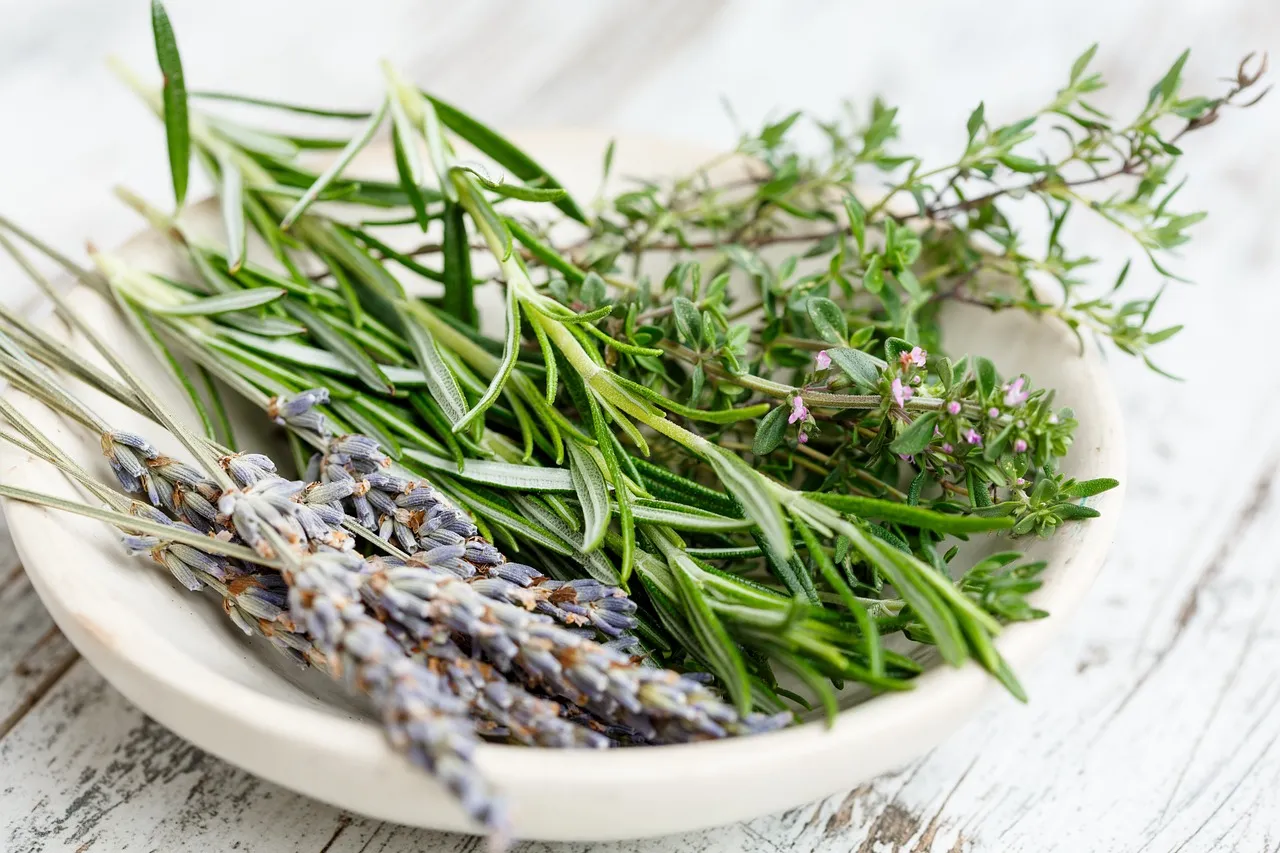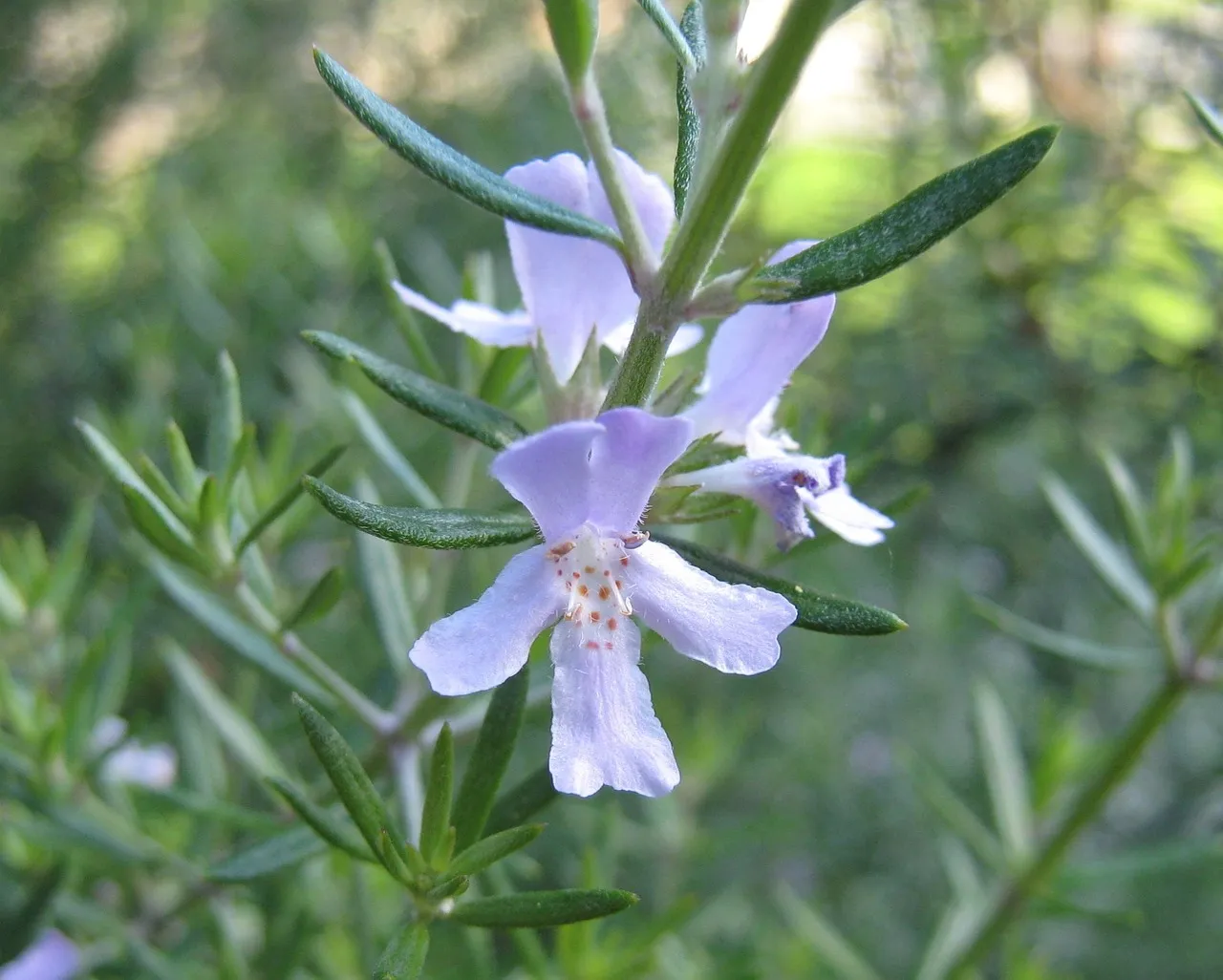Welcome to “Rosemary 101: Care & Maintenance Tips for Balcony Garden,” your comprehensive guide to cultivating and nurturing rosemary plants in the cozy confines of your balcony garden. Rosemary, with its fragrant foliage and versatile uses, is a wonderful addition to any herb collection. Whether you’re a seasoned gardener or a beginner with a green thumb, this blog post will equip you with the essential knowledge and techniques needed to successfully care for and maintain your rosemary plants. From understanding the basics of rosemary plant care to optimizing growing conditions, selecting the right soil, fertilizing techniques, pruning methods, and overcoming common challenges, we’ll explore every aspect of rosemary care in detail. Additionally, we’ll delve into the art of companion planting, propagation techniques, and even creative uses for rosemary beyond the kitchen. So, let’s dive in and unlock the secrets to a thriving and aromatic rosemary balcony garden.
Understanding the Basics: Rosemary Plant Care for Balcony Gardens
Delve into the fundamental aspects of rosemary plant care specifically tailored for balcony gardens. In this comprehensive guide, we will provide you with a solid understanding of the basics to ensure the health and vitality of your rosemary plants. From choosing the right location on your balcony to understanding the optimal sunlight and watering requirements, we’ll cover all the essential elements for successful rosemary care. Additionally, we’ll discuss the importance of selecting the appropriate soil type and offer insights into fertilizing techniques that promote robust growth. Pruning tips will also be shared to help you maintain the desired shape and size of your rosemary plants. By grasping the core principles of rosemary care, you’ll be equipped with the knowledge and confidence needed to cultivate thriving and flourishing plants in your balcony garden.

Rosemary Varieties: Exploring Different Types for Your Balcony Garden
You may pick from a range of delectable rosemary cultivars to bring diversity and beauty to your balcony garden. Each variety of rosemary has unique qualities, such as differences in leaf color, growing habits, and flavor potency. The following popular rosemary cultivars do well in balcony gardens:
Tuscan Blue Rosemary:
Tuscan Blue Rosemary is a vigorous, upright variety known for its showy deep blue flowers and fragrant foliage. Tall and bushy, it makes a great centerpiece for your balcony garden. This strain thrives in sun and well-drained soil, and its bold flavor enhances dishes.
Prostrate Rosemary:
Prostrate rosemary, sometimes known as climbing rosemary, is a low-growing species that looks lovely cascading from hanging pots and baskets. Its lush leaves and long stalks provide a beautiful touch to any balcony garden. This cultivar is well-suited to tiny areas and may be used as a ground cover or a hanging plant..
Barbecue Rosemary:
As its name suggests Barbecue rosemary is a kind that goes well with food items that have been grilled. Although this compact, bushy cultivar is great for container gardens, it requires periodic pruning to maintain its shape. grows best on soil that drains properly and in full sunshine.
Golden Rain Rosemary:
The Golden Rain rosemary is a remarkable variety characterized by its vibrant yellow-green foliage, making it a standout choice for your balcony garden. Its unique appearance adds a lively and eye-catching touch to your outdoor space. Just like other rosemary types, its leaves are aromatic and bursting with flavor, making it an excellent option for enhancing your culinary creations. Whether you have a garden bed or prefer container gardening, this mounding and compact cultivar is well-suited for both. Embrace the beauty and tastefulness of Golden Rain rosemary as you cultivate a vibrant and aromatic balcony garden..
When selecting a rosemary variety for your balcony garden, consider factors such as space availability, growth habit, flavor preference, and overall aesthetic appeal. With the right choice of rosemary type, you can elevate the visual appeal and culinary experience of your balcony garden while enjoying the benefits of this versatile herb.
The Ideal Growing Conditions: Sunlight and Watering Tips for Rosemary on Your Balcony
Discover the ideal growing conditions for rosemary on your balcony as we delve into essential sunlight and watering tips. Ensuring your rosemary plants receive adequate sunlight is crucial for their overall health and productivity. Aim to place your pots in a location that receives at least 6 to 8 hours of direct sunlight per day. This herb thrives in full sun, so be sure to choose a spot on your balcony that offers ample sunshine. As for watering, it’s important to strike the right balance. While rosemary prefers well-draining soil, it’s important not to let it dry out completely. Water your plants deeply but infrequently, allowing the soil to dry out slightly between waterings. This prevents overwatering, which can lead to root rot. Regularly check the moisture level of the soil and adjust your watering schedule accordingly. By providing the ideal combination of sunlight and watering, you’ll ensure that your rosemary plants flourish and thrive on your balcony, adding beauty and fragrance to your outdoor space.
Choosing the Right Soil: A Guide to Soil Types for Rosemary in Balcony Gardening
When it comes to rosemary in balcony gardening, choosing the right soil is paramount for the plant’s overall health and successful growth. A well-draining soil mix is essential to prevent waterlogged conditions that can harm the roots. Opt for a lightweight and porous soil blend that allows excess moisture to drain away quickly, preventing water from pooling around the roots. A recommended option is a mixture of sandy soil, peat moss, and perlite, as it provides excellent drainage while retaining some moisture. It’s also advisable to add organic matter, such as compost or well-rotted manure, to enrich the soil with nutrients. This will support the robust growth and development of your rosemary plants. Remember to regularly monitor the soil moisture levels and adjust your watering schedule accordingly. By selecting the right soil type, you’ll create a favorable environment for your rosemary, ensuring healthy root systems and vigorous growth in your balcony garden.
Nurturing Growth: Fertilizing Techniques for Healthy Rosemary Plants
To nurture the growth of healthy rosemary plants in your balcony garden, implementing effective fertilizing techniques is crucial. Rosemary is a moderately low-maintenance herb, but providing it with the right nutrients can significantly enhance its overall health and vitality. When it comes to fertilizing, it’s best to use a balanced, slow-release fertilizer specifically formulated for herbs or vegetables. Apply the fertilizer according to the package instructions, usually in early spring or late winter, to give your rosemary a nutrient boost before the active growing season begins. Avoid excessive fertilization, as it can lead to excessive foliage growth at the expense of essential oil production. Remember to water your plants before and after fertilizing to prevent potential root burn. Additionally, organic alternatives like compost or compost tea can also be used to nourish your rosemary naturally. Regular monitoring of your plants’ growth and appearance will help you determine if additional fertilization is required. By following these fertilizing techniques, you’ll promote the healthy growth of your rosemary plants, ensuring an abundant supply of fragrant foliage for your culinary endeavors and aromatic pleasure.

Pruning for Success: How to Trim and Shape Your Rosemary in a Balcony Garden
Pruning is a crucial practice for maintaining the success and aesthetics of your rosemary plants in a balcony garden. Regularly trimming and shaping your rosemary not only promotes healthier growth but also helps maintain a compact and bushy form. When pruning your rosemary, start by removing any dead, damaged, or diseased branches. This will improve air circulation and prevent the spread of pests or diseases. Additionally, pruning can be done to control the size of your rosemary plants, especially in limited balcony spaces. To shape your rosemary, trim the tips of the branches, taking care not to remove more than one-third of the plant’s total growth at a time. Focus on maintaining a balanced and symmetrical shape. Use sharp pruning shears to make clean cuts just above a leaf node or bud. Regular pruning, preferably in spring or early summer, will encourage new growth and maintain the desired size and form of your rosemary plants. Remember to collect the trimmed foliage for culinary use or drying purposes. By following these pruning techniques, you’ll achieve both visual appeal and healthy growth for your rosemary plants in your balcony garden.
Overcoming Common Challenges: Troubleshooting Tips for Rosemary Care in Balcony Gardens
While rosemary is a resilient herb, it may face some common challenges in a balcony garden setting. By being aware of these issues and armed with troubleshooting tips, you can overcome them and ensure the continued well-being of your rosemary plants. One challenge you may encounter is poor drainage, leading to waterlogged soil and root rot. To address this, make sure your pots have proper drainage holes and use a well-draining soil mix. Another issue is overwatering, which can cause wilting, yellowing leaves, and root problems. Allow the soil to dry out slightly between waterings and water your rosemary plants deeply but infrequently. Pests like aphids and spider mites may occasionally target your rosemary. Combat these pests by regularly inspecting your plants, manually removing them, or using organic insecticidal soaps. Insufficient sunlight can also hinder the growth of rosemary. Don’t forget to give your plants at least six hours of direct sunlight everyday.. In colder climates, protecting your rosemary from frost and extreme cold is vital. Consider moving potted plants indoors during winter or providing frost protection with covers or mulch. By troubleshooting these common challenges and applying the appropriate solutions, you can ensure the resilience and vitality of your rosemary plants in your balcony garden.
Pest Prevention and Management: Protecting Your Rosemary from Common Insects
Keeping your rosemary plants protected from common insects is essential for their health and overall well-being in your balcony garden. While rosemary is generally resilient, it can still be susceptible to pests like aphids, spider mites, and whiteflies. Implementing effective pest prevention and management techniques is crucial to safeguarding your plants. Regularly inspect your rosemary for any signs of infestation, such as distorted leaves, webbing, or tiny insects. If you notice any pests, promptly remove them by gently washing the leaves with a strong stream of water or manually removing them with your hands. Natural remedies like insecticidal soaps or neem oil sprays can also be used to control pests effectively. Encouraging natural predators, such as ladybugs or lacewings, can aid in keeping pest populations in check. Additionally, maintaining a healthy and clean growing environment by regularly removing debris, fallen leaves, and weeds can discourage pests from taking up residence near your rosemary. By implementing these pest prevention and management practices, you can ensure that your rosemary plants thrive and remain pest-free in your balcony garden, allowing you to enjoy their beauty and fragrance to the fullest.
Container Selection: Choosing the Perfect Pot for Growing Rosemary on Your Balcony
Selecting the right container is crucial when it comes to growing rosemary on your balcony. Choosing the perfect pot ensures optimal growth and development of your plants. Firstly, opt for a container that is at least 12 inches deep and has sufficient width to accommodate the root system of the rosemary plant. The pot should have drainage holes to prevent waterlogging and promote proper drainage. This allows excess water to escape, preventing the roots from sitting in stagnant water. Consider using a lightweight and durable material like terracotta, plastic, or fiberglass for your pots. Terracotta pots offer good breathability but may require more frequent watering, while plastic and fiberglass containers are lightweight and retain moisture better. Additionally, consider the size of your balcony and the available space when choosing the pot. If space is limited, you can opt for vertical planters or hanging baskets to maximize the use of vertical space. By selecting the right pot for your rosemary plants, you provide them with a suitable environment for healthy growth, ensuring that they thrive and flourish in your balcony garden.
Propagating Rosemary: Step-by-Step Guide to Growing New Plants from Cuttings
Propagating rosemary from cuttings is an excellent way to expand your collection of plants in the balcony garden. With a step-by-step guide, you can successfully grow new rosemary plants and enjoy the satisfaction of cultivating them yourself. To begin, select a healthy and mature rosemary plant as the source for your cuttings. Using clean and sharp pruning shears, take a 4-6 inch cutting from the stem, ensuring it includes a few sets of leaves. After removing the lower leaves, just one pair should remain at the top. Dip the cut end of the stem in a rooting hormone powder to promote root development, then gently insert it into a well-draining potting mix or a mixture of vermiculite and perlite. Mist the soil and cover the pot with a clear plastic bag or a propagator dome to create a humid environment. Place the pot in a warm and bright location, avoiding direct sunlight. Mist the cutting regularly to maintain humidity, but be cautious not to overwater. Within a few weeks, roots will start to develop, and new growth will emerge. Once the roots are established, you can transplant the new rosemary plant into a larger container or your balcony garden. By following this step-by-step guide, you can successfully propagate rosemary from cuttings and expand your balcony garden with healthy and thriving plants.
Winter Care: Preparing and Protecting Rosemary for Cold Weather on Your Balcony
Winter care is crucial for preparing and protecting your rosemary plants during cold weather on your balcony. Rosemary is a Mediterranean herb that is sensitive to frost and freezing temperatures, so taking the necessary precautions will help ensure its survival and vitality. As winter approaches, consider moving your potted rosemary plants indoors to a cool but bright location, such as a sunny window or a conservatory. If moving them indoors is not feasible, provide protection by covering the plants with frost blankets or horticultural fleece during cold nights. This will shield them from freezing temperatures and harsh winds. Avoid placing the pots directly on cold surfaces, as this can lead to root damage. Instead, use pot feet or insulating materials to elevate the containers. Additionally, water your rosemary plants sparingly during winter, as they require less moisture in cooler temperatures. Monitor the soil moisture and ensure it doesn’t become overly saturated. By implementing these winter care practices, you can safeguard your rosemary plants from the detrimental effects of cold weather and ensure their survival, allowing them to thrive and bring joy to your balcony garden for years to come.
Companion Planting: Best Plants to Grow alongside Rosemary in Balcony Gardens
Companion planting can greatly benefit your rosemary plants in balcony gardens by enhancing their growth, repelling pests, and attracting beneficial insects. When selecting companion plants, consider those that thrive in similar growing conditions and offer complementary benefits. One excellent companion plant for rosemary is lavender, as both herbs have similar care requirements and share a pleasant fragrance. Lavender also attracts pollinators and repels pests, making it an ideal companion. Thyme is another great choice, as it complements the culinary use of rosemary and helps deter cabbage moths and whiteflies. Other suitable companion plants include sage, oregano, and marigolds. Sage and oregano repel pests while providing a diverse range of flavors for your culinary adventures. Marigolds, with their vibrant flowers, help repel harmful insects and add visual appeal to your balcony garden. When planning your companion planting, consider the size and growth habits of each plant, ensuring they won’t compete for resources or overshadow the rosemary. By incorporating these companion plants alongside your rosemary, you can create a harmonious and beneficial ecosystem that promotes the overall health and well-being of your balcony garden.
Harvesting and Preserving: When and How to Harvest Rosemary for Culinary and Medicinal Use

Knowing when and how to harvest rosemary is essential for maximizing its culinary and medicinal benefits in your balcony garden. Harvesting rosemary can be done throughout the growing season, but it’s best to wait until the plant has matured and established a good amount of foliage. When the plant reaches a height of about 8-10 inches, you can begin harvesting. To harvest rosemary, simply snip off the sprigs or branches using sharp pruning shears or scissors. Avoid cutting too much at once, as this can stunt the plant’s growth. Instead, take a few sprigs as needed, leaving the remaining foliage intact. Harvesting in this manner allows the plant to continue producing new growth. When preserving rosemary, there are various methods you can choose from. Air drying is a simple and effective technique: bundle the harvested sprigs together and hang them upside down in a well-ventilated, dry area. Alternatively, you can also dry rosemary in a dehydrator or oven set to a low temperature. Once dried, store the rosemary in airtight containers away from direct sunlight. Another preservation method is freezing. Strip the rosemary leaves from the stems, chop them if desired, and pack them in freezer-safe bags or containers. Frozen rosemary retains its flavor well and can be used in cooking directly from the freezer. By mastering the art of harvesting and preserving rosemary, you can enjoy its aromatic and flavorful qualities throughout the year, enhancing your culinary creations and benefiting from its medicinal properties.
Creative Uses for Rosemary: DIY Crafts and Natural Home Remedies
Rosemary is a versatile herb that offers not only culinary delights but also creative uses in DIY crafts and natural home remedies. Its aromatic and appealing qualities make it a fantastic ingredient for homemade candles, potpourri, and bath products. You can infuse rosemary into oils or make sachets to enjoy its delightful scent throughout your home. Rosemary also possesses natural properties that can be utilized in home remedies. For example, a rosemary-infused rinse can promote healthy hair and scalp, while a soothing rosemary tea can provide relief from headaches and indigestion. Additionally, rosemary oil has been used in aromatherapy to reduce stress and improve focus. By exploring the creative side of rosemary, you can unleash its potential beyond the kitchen and create unique, homemade items that bring a touch of nature and wellness into your home. Whether you’re indulging in a relaxing bath infused with rosemary or crafting beautiful handmade gifts, the creative uses of rosemary add an extra dimension to your balcony garden experience.

Revitalizing Your Rosemary: Rejuvenation Techniques for Older or Stressed Plants
If you have older or stressed rosemary plants in your balcony garden, there are techniques you can employ to revitalize them and encourage healthy growth. One method is rejuvenation pruning, which involves selectively cutting back the plant to stimulate new growth. Begin by removing any dead or diseased branches, and then trim back the remaining branches by about one-third to one-half of their length. This encourages the plant to produce fresh foliage and helps maintain a compact and bushy shape. Another technique is root pruning, especially if your rosemary is pot-bound or experiencing root congestion. Gently remove the plant from its container, and using a clean knife or shears, trim the outer layer of roots, cutting away any circling or tangled roots. This process stimulates the growth of new, healthy roots and improves overall plant vigor. After root pruning, replant the rosemary in fresh, well-draining soil and provide it with proper care and maintenance. Additionally, ensure your rosemary receives adequate sunlight, water, and nutrients to support its rejuvenation process. With time and proper care, your older or stressed rosemary plants can bounce back, regaining their vitality and enhancing the beauty of your balcony garden once again.
Frequently Asked Questions: Expert Answers to Common Queries about Rosemary Care in Balcony Gardens
Question: How often should I water my rosemary plants in the balcony garden?
Answer: Rosemary plants like well-drained soil, so it’s important not to overwater. As a general rule, water your rosemary when the top layer of soil seems dry. Depending on your climate and pot size, this can range from once a week to once every 10 days. It is best to monitor soil moisture and adjust watering frequency accordingly.
Question: Can I grow rosemary indoors on my balcony?
Answer: Certainly! Rosemary can indeed thrive indoors on your balcony, provided you give it the right conditions. Adequate sunlight is crucial for its growth, so make sure the plant receives a minimum of six hours of direct sunlight each day. To support its healthy development, opt for a suitable container that offers proper drainage, allowing excess water to escape and preventing root rot. Additionally, ensure you use well-draining soil to prevent waterlogged conditions that can be detrimental to rosemary. Another helpful tip is to periodically rotate the plant to ensure even exposure to sunlight, which promotes uniform growth and prevents the plant from leaning towards the light source. By following these guidelines, you can successfully cultivate and enjoy thriving rosemary plants on your balcony, even when indoors..
Question: How can I prevent my rosemary from becoming leggy?
Answer: To avoid foot growth, it is essential to provide enough sunlight for your rosemary plant. Make sure they get at least six hours of direct sunlight each day. Regular pruning also helps maintain a compact shape and promotes denser growth. Prune the plant regularly, especially after flowering, removing the top third of the stem .
Question: Can I use rosemary for cooking?
Answer: Absolute! Rosemary is a versatile herb that adds delicious flavor to various dishes. The fresh leaves can be used in marinades, grilled meats, vegetable dishes and even breads. Simply strip the leaves from the stem and chop or crush them before adding them to your culinary creations .
Question: How can I prevent pests from infesting my rosemary plants?

Answer: To prevent pests, maintain a healthy and clean growing environment. Regularly inspect your plants for signs of infestation, such as distorted leaves or the presence of insects. Remove any affected leaves or pests manually, and consider using organic insecticidal soaps or neem oil sprays as natural pest control methods. Additionally, attracting beneficial insects like ladybugs or lacewings can help keep pest populations in check.
Keep in mind that each rosemary plant is different, so it’s important to pay attention to and provide for its individual demands. Your balcony garden’s rosemary will flourish with careful care, producing aromatic leaves and enriching your culinary explorations..
Conclusion
In conclusion, lavender balcony gardening offers a delightful and aromatic experience that can be enhanced by incorporating rosemary into your garden. Rosemary, with its numerous uses and benefits, complements lavender perfectly and adds another layer of versatility to your balcony garden. From growing rosemary to utilizing it in recipes and enjoying its health benefits, this ultimate guide has provided you with valuable tips and tricks. Whether you’re a seasoned gardener or just starting out, the care and maintenance of rosemary plants, along with companion planting and propagation techniques, have been explored in detail. The different varieties of rosemary, pruning methods, and the importance of proper soil selection have also been covered. Additionally, the benefits of rosemary essential oil and creative uses of this herb have been showcased. With the knowledge gained from this guide, you can confidently create a flourishing balcony garden that combines the beauty and fragrance of lavender with the versatility and benefits of rosemary. So, get ready to embark on your lavender balcony gardening journey, infusing your space with the enchanting scents and bountiful benefits of these remarkable herbs. Happy gardening!
🌿 #RosemaryCare #BalconyGardenTips #PlantMaintenance
